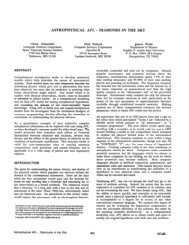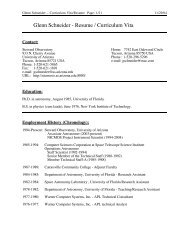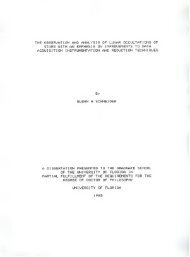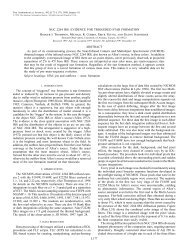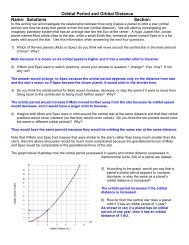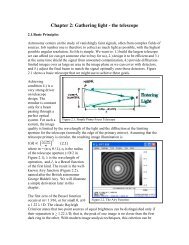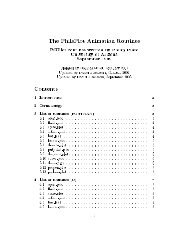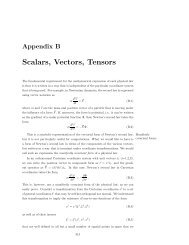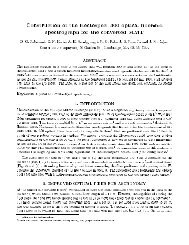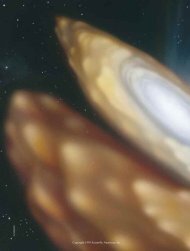Solutions for Homework #2
Solutions for Homework #2
Solutions for Homework #2
You also want an ePaper? Increase the reach of your titles
YUMPU automatically turns print PDFs into web optimized ePapers that Google loves.
100<br />
10<br />
N clust [1/(kpc 2 Gyr)]<br />
1<br />
0.1<br />
0.001 0.01 0.1 1 10<br />
age [Gyr]<br />
Figure 2: The fitted curve to the number density of clusters<br />
the number of clusters that <strong>for</strong>med (ie., compute the area between a horizonatal line at<br />
78clusters/kpc 2 /Gyr and the fit to the data points). This yields<br />
N disp = 766 clusters<br />
kpc 2<br />
∗<br />
x1000<br />
cluster<br />
(56)<br />
Converted to the number of stars per square parsec,<br />
If we distribute this into a 100pc thick layer, we get<br />
The stellar number density in the Solar neighborhood is<br />
ρ stars = .7665 ∗<br />
pc 2 (57)<br />
ρ stars = 0.007662 ∗<br />
pc 3 (58)<br />
ρ stars ∼ 0.14 ∗<br />
pc 3 (59)<br />
Which means that about 5% of the stars in the solar neighborhood have been <strong>for</strong>med in<br />
clusters. This number is an underestimate primarily because of our assumption that the<br />
star <strong>for</strong>mation rate in the past was the same as it is now (likely was higher).<br />
8




